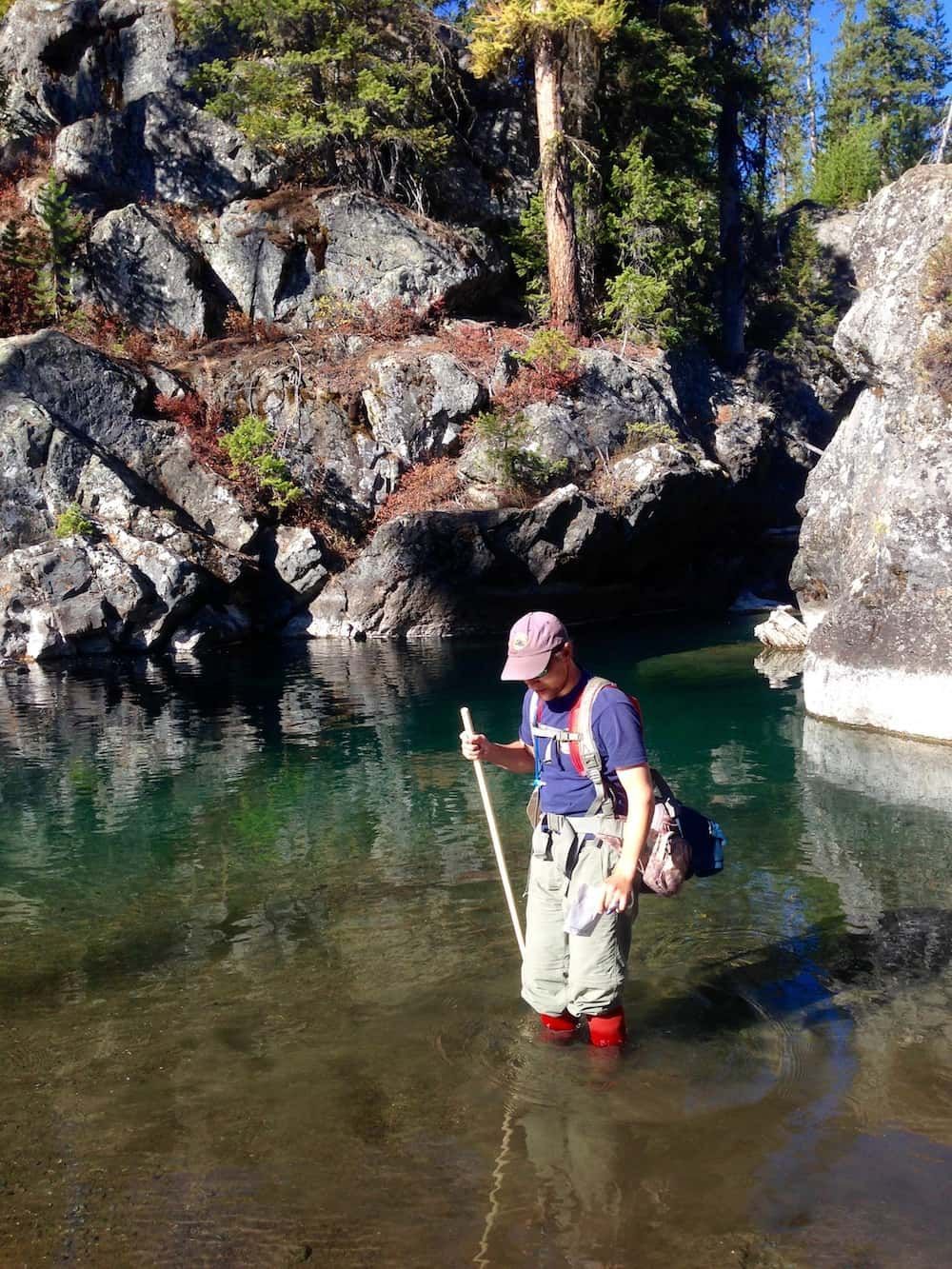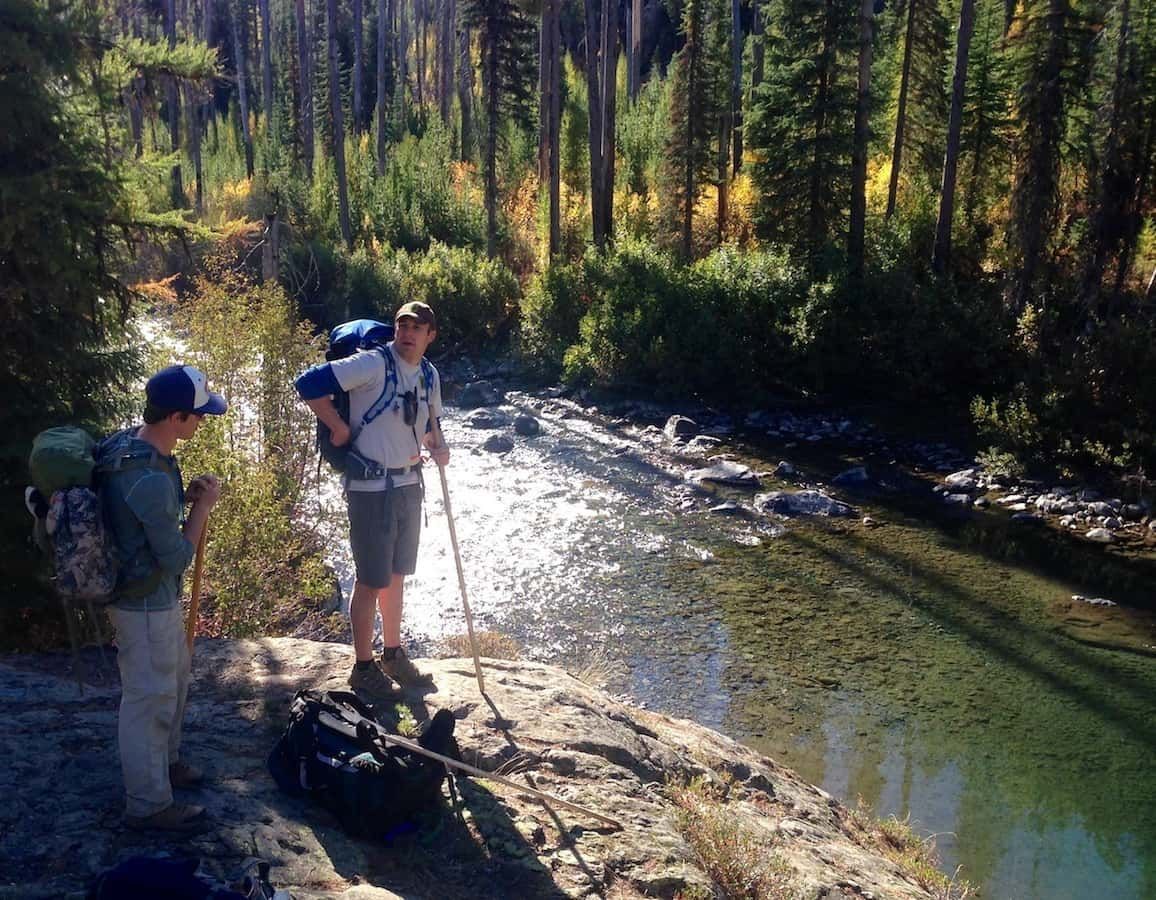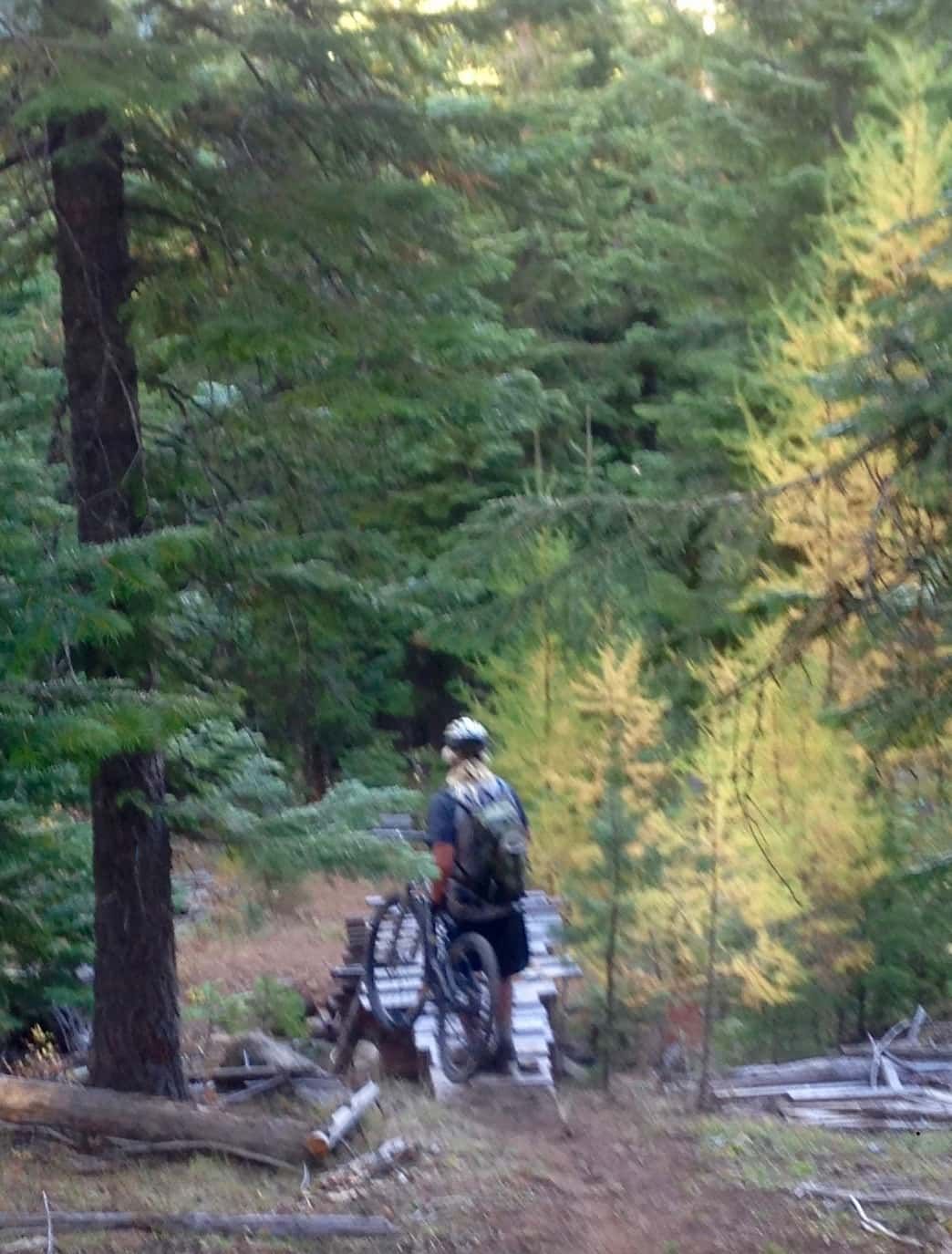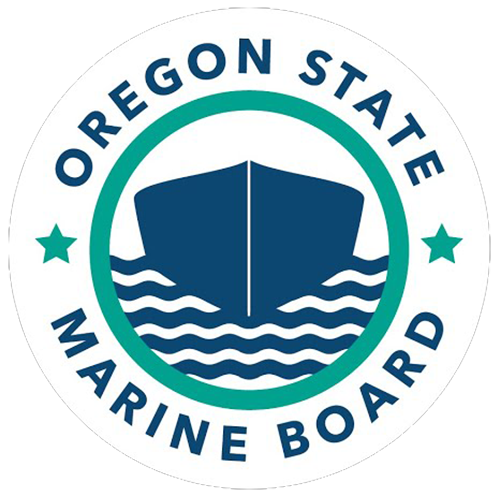What a Load of Bull Trout
The upper Imnaha country is an honest-to-golly end of the rainbow place to be this time of year with hillsides of gold from the tamaracks going off. The weather for the bull trout spawning ground survey at the end of October was eeeeeeeepic. Gearboat master Todd Kruger was the wilderness chef. Barry Cox packed our gear in. I got to go along to help look for bull trout redds. Here we see Ian Wilson of Nez Perce Tribal Fisheries wading in the water peering around for redds. Note the blue, blue sky and green, green water. Man, it was nice up there. You outdid yourself, Ma Nature.
Key Takeaways
- Bull trout spawning surveys reveal critical habitats — Spotting bull trout redds in the upper Imnaha helps fisheries like Nez Perce Tribal Fisheries and ODFW monitor spawning activity and preserve native fish populations.
- Fall offers peak conditions for observation — Late October in the Wallowas delivers clear skies, vibrant tamarack foliage, and optimal visibility for identifying bull trout nesting areas.
- Collaborative conservation in action — Teams from
U.S. Fish & Wildlife,
Nez Perce Tribal Fisheries, and
ODFW join forces to document bull trout reproduction sites, ensuring science-backed management of the species.
- Outdoor adventure meets research — Fieldwork combines rugged hikes, cold-water wading, and wilderness living—proving that conservation can be both demanding and deeply rewarding.
- Grande Ronde River remains an angler’s paradise — Beyond the survey, local guides note strong steelhead activity, making this Oregon region a must-visit for fall fishing and eco-tourism enthusiasts.

Here’s Jeff Yanke of ODF’nW and Brian Simmons from NPTFisheries beholding the lovely idyllic stream before bushwacking down through face slappy brush to their next survey stretch.

Thanks to Gretchen Sausen with US Fish & Wildlife for running the show and letting me talk her into taking me along. Identifying these spots where fish make babies is interesting work. You wade your section of stream with eyes peeled for likely signs. A disturbance in the river bottom. Waterproof baby montitors. Little fish diapers littered around the gravel. That kind of thing. Then you consult. Measure. Say some science things. I like to announce a possible redd sighting by singing out: “I spy with my wee little eye … a clear line of deposition over here.”
Again, look at the grandeur. I can’t stress enough the grandeur.
This time of year in the Wallowas is just the bee’s knees, shins and ankles. Kruger and I are about to shove off on the Grande Ronde a five day steelhead float. So we got that going for us, which is nice. Meantime, got in a little mountain biking. Got on a trail recently that was so steep I worried about fire danger from the heat coming off my melting brake pads.
No joke, Todd’s brakes got so hot they gave up on doing their job and Kruges got a nasty blister when he touched the brake disc to investigate. Just a fun little bike ride, I was told. More or less straight down, it turned out.

Been hearing of great results on the Grande Ronde from steelheaders. Will bring back a report from this Minam to Wildcat expedition. See you out there.
Frequently Asked Questions
This article shares a firsthand account of a late-October bull trout spawning survey in Oregon’s upper Imnaha country — a mix of outdoor science, adventure, and appreciation for the wild Wallowas.
What is a bull trout redd?
A bull trout redd is a nest where bull trout lay their eggs. It appears as a disturbed patch of gravel on the riverbed, often cleaner and lighter than the surrounding area. Identifying these redds helps biologists monitor spawning success and protect critical fish habitats.
Why are bull trout spawning surveys important?
Spawning surveys track where and how successfully bull trout reproduce. By documenting redd locations, researchers and wildlife agencies can assess population health, identify habitat threats, and support conservation efforts for this threatened species.
Where is the Imnaha River and why is it significant?
The Imnaha River flows through northeastern Oregon’s Wallowa Mountains. It’s a remote, pristine watershed known for supporting native salmonids like bull trout and steelhead. Its wild setting makes it ideal for studying natural fish populations and preserving coldwater ecosystems.
Who conducts bull trout spawning surveys?
Surveys are typically carried out by fisheries biologists and technicians from organizations like the Nez Perce Tribal Fisheries, Oregon Department of Fish and Wildlife, and U.S. Fish & Wildlife Service. These teams work together to monitor spawning grounds and ensure accurate data collection.
What’s it like to conduct a bull trout redd survey?
Surveyors wade through chilly mountain streams, scanning the gravel for signs of redds. It’s hands-on, detailed work that requires patience and experience. Between the science, teamwork, and stunning wilderness backdrop, it’s both challenging and rewarding.
What time of year do bull trout spawn?
Bull trout usually spawn in the fall, between September and November, when water temperatures drop and flows are stable. This timing ensures cooler, oxygen-rich conditions for eggs to develop safely over the winter months.
How can you tell if you’ve found a redd?
A redd looks like a clean, oval-shaped patch of gravel, where the female has cleared silt to lay her eggs. The area is often slightly mounded downstream. Surveyors measure and mark these spots carefully to avoid disturbing them.
What other wildlife activities happen in the Wallowas in fall?
Autumn in the Wallowas offers prime steelhead fishing, mountain biking, and hiking. With golden tamarack hillsides and crisp air, it’s one of the most scenic times to explore the region — whether for work, like fisheries research, or recreation.
What gear is needed for a spawning survey trip?
Essential gear includes waders, polarized glasses for spotting redds, GPS units for mapping, measuring tools, and safety equipment. In remote areas like the Imnaha, support teams often use pack animals to transport supplies and camping gear.
Can the public help protect bull trout habitat?
Yes. Anglers and recreationists can help by avoiding known spawning areas, keeping streams clean, and supporting conservation programs. Staying on designated trails and following fishing regulations helps maintain healthy habitats for future generations.
The post What a Load of Bull Trout appeared first on Winding Waters River Expeditions.
If you’re inspired to see these places yourself, check out our guided white water rafting trips across Oregon and Idaho.






